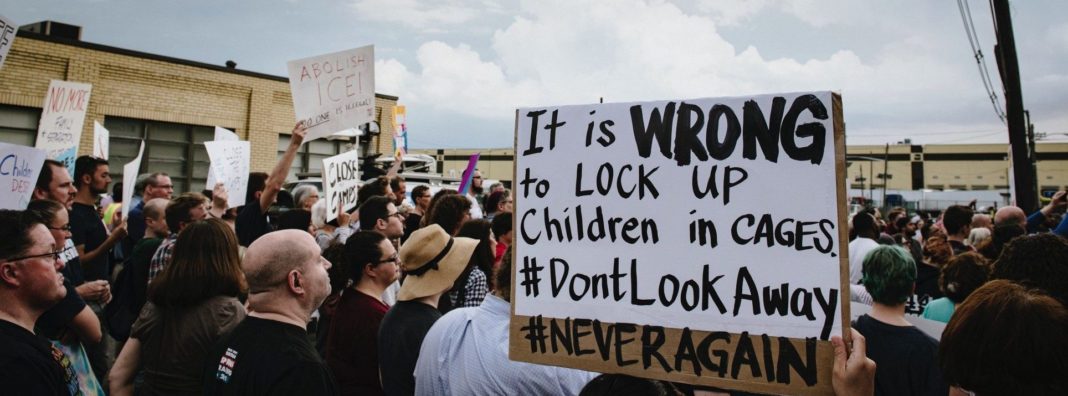
Recent reports have exposed just how bad life is for the children who find themselves in detention centers along our southern border. The New York Times has described filthy conditions lacking food and basic health care. Investigations have uncovered overflowing toilets, extreme heat, bedbugs, and days without showers. At a detention center in Clint, Texas, “the stench of children’s dirty clothing was so strong it spread to the agents’ own clothing.” In fact, it could be smelled on the agents long after they left work.
No one should be subject to these conditions, yet we have thousands of children suffering in them today. So far, in 2020, U.S. Border Patrol agents have apprehended nearly 12,000 children at the U.S. border. Considering the poor living conditions in detention centers and the large number of school-aged children, it should be no surprise that education in detention centers is also lacking. While their peers in the U.S. are preparing for another school year and wondering whether classes will be in-person or online, children held in immigrant detention centers lack even basic hygiene care. It is becoming more important than ever that we take a deep dive into how these children are being educated and how their circumstances may affect this education.
Even after they are released, children may spend the rest of their lives trying to overcome the challenges that inadequate educational opportunities and psychological trauma during their detention may pose.
We have an obligation to educate these children
The Flores Settlement Agreement, established in 1997 as an understanding between immigration activists and the U.S. government, set clear standards for immigration detention centers. These include that children should be kept in the least restrictive environment possible with limited time in detention.
Unaccompanied children who are taken into custody at Customs and Border Patrol (CBP) processing centers must be transferred to the U.S. Department of Health and Human Services’ (HHS) Office of Refugee Resettlement (ORR) within 72 hours of their initial detention. The ORR oversees facilities that house detained immigrant children, and under the Flores Settlement Agreement, is required to provide educational opportunities. In 2019, nearly 70,000 children were referred to ORR, a number that has risen over the past three years. That number is also roughly twenty times larger than the average school district size in the U.S. (roughly 3,659 students), showing that accommodating education within detention centers is an immense task.
After the ORR became responsible for handling the care of unaccompanied minor children in 2003, it began implementing the requirements of the Flores Settlement Agreement. The ORR requires that the facilities which house these children must deliver adequate education, which they define as at least 6 hours of education per weekday in basic academic areas. In theory, this should mean that children receive education in subjects such as science, math, and reading in addition to physical education. To account for the varying ages and educational backgrounds of children, classes are separated based on academic and linguistic abilities.
We know very little about what education is being provided
In reality, we don’t know what education in detention centers is like. For most children living in the U.S., six hours per day is a typical school week, but for children in detention centers, it is unclear whether they will receive adequate learning time.
It’s typically only when a lawsuit or news report gets national attention that we learn anything about the situations in detention centers. A policy statement published by the American Academy of Pediatrics notes that the primary source of information regarding conditions in detention centers comes from reports written by advocacy groups. The Government Accountability Office’s (GAO) reports in response to legal issues and media attention exhibit inconsistencies in the standards held by detention centers regarding telephone access and medical care for pregnant mothers, for example.
Little information regarding living conditions and educational practices comes directly from detention centers, and even information provided from the Department of Homeland Security (DHS) shows noncompliance with guidelines set by Immigration and Customs Enforcement (ICE). Though all states must follow ORR policy regarding the care of children in detention, each state has its own licensing standards and regulations vary. Plus, many detention centers are run by private contractors. All of these factors suggest that children in different immigrant detention centers are likely receiving different levels of education.
Immigrant detention centers and educational outcomes
Even if children are educated in detention centers, the trauma of detention itself is likely to influence a child’s ability to learn. For example, it’s unlikely that overflowing toilets, bed bugs, poor hygiene, and the lack of basic health care are encouraging children to gain competency in their coursework. Children living in unsanitary and confined environments are apt to suffer psychological damage. Psychiatry experts studied detention centers in Australia and found that both parents and children in immigrant detention centers experience higher levels of trauma due to the unpredictability of their circumstances and inadequate living conditions.
Other research on the outcomes of long-term detention for asylum seekers determined that people in long-term detention are more likely to have poor mental health including depression, anxiety, and PTSD. Children are particularly susceptible to these outcomes of psychological trauma, because they tend to be separated from their parents. In addition to having to cope with life in a detention center, children lose their support system which increases their vulnerability to developing emotional symptoms such as depression, trouble sleeping, and poor appetite. Overall, deteriorating mental health makes it difficult for children to focus on their education.
Not only does detention have a negative impact on mental health and learning outcomes, but decreased ability to learn can affect children in their lives post-detention. Children will have to catch up on the materials that they did not successfully learn while in detention. Therefore, children may be prevented from excelling in or even completing their education.
We should invest more in educating immigrants, especially those in detention centers
Some children in detention will eventually be granted asylum and end up staying in the U.S. They are future contributors to our communities. Educating them facilitates their potential for increased productivity and innovation by giving them a strong academic foundation when they enter the workforce.
And, while they are detained, we should also invest in educating those children who are ultimately deported. Especially those that are likely to return to their country of origin, where it may be difficult to continue their education. Lacking education perpetuates the dearth of human capital in origin countries which encourages individuals to migrate in the first place. Providing children with education, even for a short period, can help prevent them from getting behind and potentially having difficulty keeping up with their peers.
Keeping students on track with their education will also benefit the U.S. in the long run. Thriving economies in the origin countries of migrants encourages trade with the U.S., which in turn will aid our own domestic economic development. In fact, when the share of immigrants from a particular country increases by 1 percent, the likelihood that firms from that country invest in the receiving country increases by 50 percent.
In short, detention is not a long-term solution. It only harms the next generation of contributors to economic growth.
To solve these problems, we need to embrace alternatives to immigrant detention centers
Detention is expensive — about $137 a day per adult detained. That’s significantly more than alternatives. Aside from being costly, our current approach to detention is doing little to improve the health and education of the children caught in the system. The trauma and conditions in detention centers are likely detrimental to those detained. We should seek an alternative approach that avoids the adverse effects of immigrant detention including lower education levels and emotional trauma.
One example of these alternatives to detention is the Vera Institute for Justice Appearance Assistance Program (AAP). This program allows immigrants with a U.S. address to remain in their communities throughout the process of their immigration proceedings. For those who do not already have an established residence in the U.S., programs such as the Interfaith Community for Detained Immigrants’ Marie Joseph House provide transitional housing for immigrants to ensure that even those who are detained shortly after entering the country, have a secure housing situation while they await a decision on their legal status. Children who are living in a household environment are able to participate in school while having a secure and comfortable place where they can thrive. Evidence shows that the AAP program was 55 percent less costly than detention for asylum seekers. Alternatives like the AAP program are less burdensome for taxpayers and can more effectively provide immigrant children of education.
The Vera Institute for Justice’s program is just one example of an alternative to detention centers. Other programs are similarly less expensive, such as electronic monitors or family case management. For example, the Intensive Supervision Appearance Program costs about $4.20 a day per participant. This program uses curfews, electronic monitoring, and community-level programming to keep tabs on immigrants released from detention. It also ensures that immigrants comply with immigration court decisions.
Immigration and Customs Enforcement should embrace alternatives as a way to better care for the people that they detain. For children, these alternatives will mean a lower likelihood of suffering from psychological trauma and better educational opportunities. These alternatives are also more humane and often less expensive.
The children detained at pivotal moments during their education should be set upon a better path than current opportunities provide. This requires ensuring that immigrant children have a safe and sanitary environment where they can learn effectively. Specifically, alternative programs that allow immigrant children to remain at home while awaiting a legal decision would prevent them from being subject to the trauma of life in a detention facility and allow them to continue receiving a quality education.

